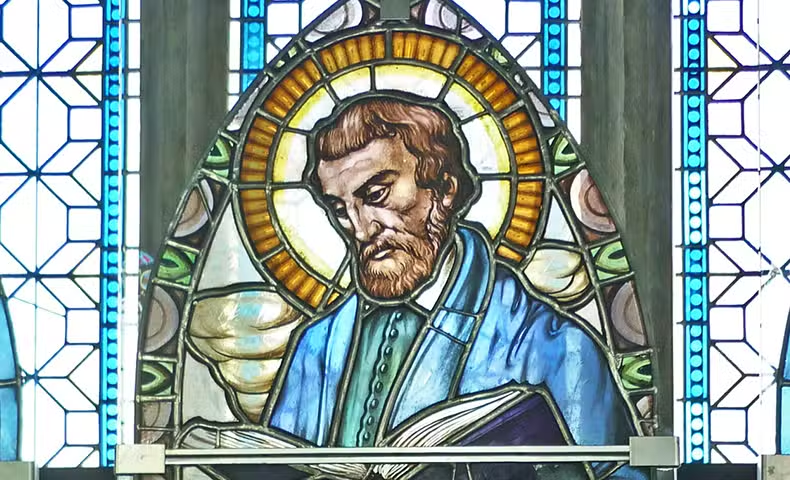Image: Detail | Saint Petrus Canisius | photo by SchiDD
Saint of the Day for December 21
(May 8, 1521 – December 21, 1597)
Saint Peter Canisius’ Story
The energetic life of Peter Canisius should demolish any stereotypes we may have of the life of a saint as dull or routine. Peter lived his 76 years at a pace which must be considered heroic, even in our time of rapid change. A man blessed with many talents, Peter is an excellent example of the scriptural man who develops his talents for the sake of the Lord’s work.
Peter was one of the most important figures in the Catholic Reformation in Germany. He played such a key role that he has often been called the “second apostle of Germany,” in that his life parallels the earlier work of Boniface.
Although Peter once accused himself of idleness in his youth, he could not have been idle too long, for at the age of 19 he received a master’s degree from the university at Cologne. Soon afterwards he met Peter Faber, the first disciple of Ignatius of Loyola, who influenced Peter so much that he joined the recently formed Society of Jesus.
At this early age Peter had already taken up a practice he continued throughout his life—a process of study, reflection, prayer, and writing. After his ordination in 1546, he became widely known for his editions of the writings of St. Cyril of Alexandria and St. Leo the Great. Besides this reflective literary bent, Peter had a zeal for the apostolate. He could often be found visiting the sick or imprisoned, even when his assigned duties in other areas were more than enough to keep most people fully occupied.
In 1547, Peter attended several sessions of the Council of Trent, whose decrees he was later assigned to implement. After a brief teaching assignment at the Jesuit college at Messina, Peter was entrusted with the mission to Germany—from that point on his life’s work. He taught in several universities and was instrumental in establishing many colleges and seminaries. He wrote a catechism that explained the Catholic faith in a way that common people could understand—a great need of that age.
Renowned as a popular preacher, Peter packed churches with those eager to hear his eloquent proclamation of the gospel. He had great diplomatic ability, often serving as a reconciler between disputing factions. In his letters—filling eight volumes—one finds words of wisdom and counsel to people in all walks of life. At times he wrote unprecedented letters of criticism to leaders of the Church—yet always in the context of a loving, sympathetic concern.
At 70, Peter suffered a paralytic seizure, but he continued to preach and write with the aid of a secretary, until his death in his hometown of Nijmegen, Netherlands, on December 21, 1597.
Reflection
Peter’s untiring efforts are an apt example for those involved in the renewal of the Church or the growth of moral consciousness in business or government. He is regarded as one of the creators of the Catholic press, and can easily be a model for the Christian author or journalist. Teachers can see in his life a passion for the transmission of truth. Whether we have much to give, as Peter Canisius did, or whether we have only a little to give, as did the poor widow in the Gospel of Luke (see Luke 21:1–4), the important thing is to give our all. It is in this way that Peter is so exemplary for Christians in an age of rapid change when we are called to be in the world but not of the world.
Saint Peter Canisius is a Patron Saint of:
Germany








